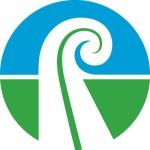Staged development proposed to smooth funding path
Proposals for a multi-million-dollar extension of wastewater services in the Bay of Islands call for a staged development to spread costs and prioritise services to meet growth demands.
The proposal, which is still subject to Resource Consent processes, calls for an expansion and upgrades to a centralised wastewater treatment plant in the Waitangi Forest as the first stage.
"The current Inlet Road treatment facility is not capable of handling additional loads outside the existing area of benefit, essentially limiting wastewater collection and treatment to central Kerikeri.
"If we are going to provide for additional connections to properly service the wider Kerikeri residential area and Waipapa, the first step has to be the provision of a treatment facility and pipelines capable of handling the load," project consultant Lars Fog says.
The stages proposed for the project are:-
Stage 1(2009 to 2011) – Estimated Costs $11.35million :
Upgrade the existing treatment plant in the Waitangi Forest from a capacity of 2700m3/d to approximately 6000m3/d.
Upgrade the existing treatment plant in the Waitangi Forest to produce a much enhanced quality effluent
Pipeline plus pumping stations from the existing treatment plant to the upgraded plant in Waitangi Forest
De-commissioning and removing of the existing treatment plant adjacent to Cobham Road
Stage 2 (2011 to 2012) – estimated Costs $2.2million
Extension of reticulation into Shepherds Road, Kerikeri Road, Access Road areas.
Connections to the scheme will be planned and installed by working with the community and developers.
Stage 3 (2012 to 2014) Estimated costs $5.0 million:
Pipeline from the existing plant site to Waipapa Road via Hone Heke Road and the Heritage Bypass and from the Heritage Bypass to Landing Road
Connections to the scheme will be planned and installed by working with the community and developers.
Stage 4 (2014 to 2015) Estimated costs $3.5 million:
Pipeline along Waipapa Road from the Heritage Bypass to Waipapa
Connections to the scheme will be planned and installed by working with the community and developers.
This is a preliminary development concept which will be modified according to demand and further staged to address growth as it occurs within the proposed areas of benefit.
The project overall calls for an additional 11.5 kilometres of new trunk pipelines and six new pumping stations to link to the expanded treatment facility in the Waitangi Forest which currently services the Paihia, Waitangi, Harura Falls and Opua areas.
In total there will be six main pumping stations at State Highway 10 near the Waipapa commercial estate, one approximately 1.5km along Waipapa Road, one at the north side of the Kerikeri Heritage Bypass bridge, one at the existing treatment plant site, one in proximity to the Inlet Road / Reinga Road junction and one at the Inlet Road / Furness Road junction.
The proposed Furness Road pumping station will allow for the future connection of the Edmunds Ruins area and the properties along Denis Strongman Road and could be deleted from the preliminary scheme and installed at a later date.
It is proposed to have a minimum of 12 hours storage capacity at each pumping station for emergency purposes.
The preliminary design for the trunk main from the existing treatment plant site to the Waitangi Forest proposes a twin pipeline, one 300mm diameter and a second of 525mm diameter. This will allow the initial use of the 300mm pipe to keep velocities up. Once flows increase beyond the capacity of the 300mm pipe then the 525mm pipe will be brought into use. Finally both pipes would be used to transport the ultimate flow when the population being serviced reaches around 50,000.
Still under consideration is a possible compromise to lay a 450mm pipe which would have sufficient capacity to service a population of around 25,000. This could meet the demand for up to 25 years or equivalent to the life of the consent. As a comparison, a 300mm pipe on its own would cater for approximately 11,000 people.
The preliminary designs are currently being expanded to outline designs to further optimise areas such as pipe sizes, pumping station capacities and storage options.
How will it be funded?
A number of funding options are available which have yet to be considered by the council for inclusion in the LTCCP review early next year. The community will have the opportunity to have a say on these and other options which may arise as part of the review process.
These options include:-
Funding under the existing policy which provides for capital projects to be funded from the uniform district-wide targeted rate for properties connected to public sewerage schemes (currently $606 per year).
Changing the policy to provide for ward-based funding for capital projects. This would be in line with the decision earlier this year for growth related Development Contributions to be charged on a ward rather than district basis. For this project this would mean the cost would be carried by a targeted rate for properties connected to sewerage schemes within the ward.
Changing the policy to provide for capital contributions from the area of benefit. This could include an innovative proposal under investigation in which private sector funding would be made available to householders as an alternative to loan servicing from rates.
Changing the policy to return to a scheme-by-scheme funding formula in which loan costs are serviced from within the area of benefit.
In each of these options, the total funding requirement would be offset by the wastewater component of Development Contributions and the use of any Ministry of Health subsidies for which the scheme may qualify.
